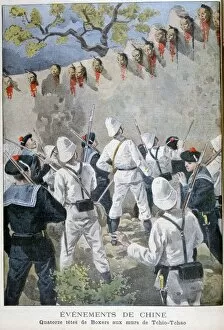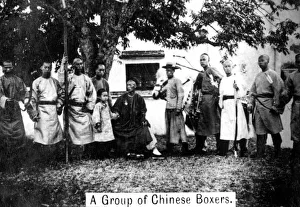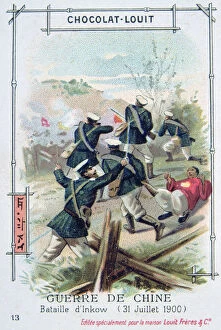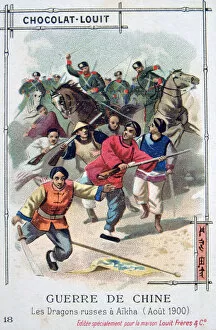Boxer Rebellion Collection (#7)
The Boxer Rebellion, a pivotal event in Chinese history, unfolded in the year 1900
All Professionally Made to Order for Quick Shipping
The Boxer Rebellion, a pivotal event in Chinese history, unfolded in the year 1900. It witnessed intense battles between British and Japanese troops against the formidable Boxer forces at Tianjin. This rebellion occurred during a time when China was undergoing partition, adding to its already volatile state. One striking image from this period captures the Bluejackets on their way to Tientsin, showcasing the troubled atmosphere prevalent throughout China. Another haunting depiction by Oswaldo Tofani reveals fourteen severed heads of Boxers displayed on the walls of Tchio-Tchao, symbolizing the brutality that characterized this conflict. The massacre of Christians in Mukden, Manchuria further exemplifies the horrors endured during this rebellion. The lithograph portrays Chinese Christians falling victim to merciless attacks by Boxers. However, amidst these dark moments emerged stories of resilience and heroism as depicted in another lithograph illustrating the relief of besieged International Legations in Beijing. Long live the army. A vibrant lithograph exclaims support for those fighting against oppression during this tumultuous time. Empress Dowager Cixi's portrait serves as a reminder of her influential role amid these events while also highlighting her controversial legacy. In contrast to such chaos and violence lies an intriguing litho titled "The Chinaman at peace, " offering a glimpse into ordinary life amidst turmoil—an oasis amidst chaos. Additionally, tensions escalated beyond national boundaries with German and Indian troops engaging in a brawl within Tianjin—a testament to how global powers became embroiled within China's internal strife. Finally, "The First Act Of Punitive Justice In Beijing" depicts justice being served through beheading—the consequences faced by those responsible for assassinating ambassadors—signifying an attempt towards restoring order and stability.
















































